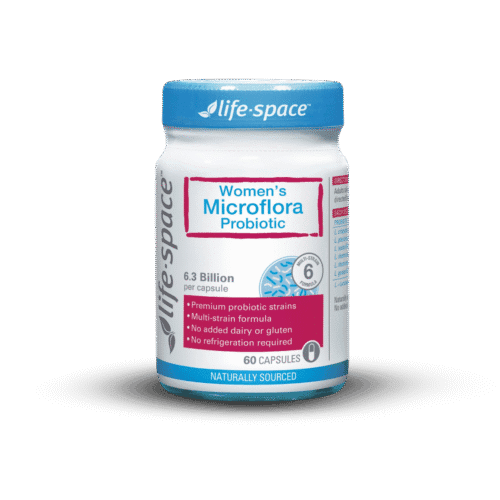Estimated reading time: 9 minutes
Table of contents
- What is DUB?
- Symptoms of DUB include:
- Why is my bleeding erratic?
- Failure to ovulate
- Diagnosing dysfunctional uterine bleeding
- The dangers of unusual bleeding
- Treating unusual bleeding
- Common medical treatments for dysfunctional uterine bleeding include:
- Natural medicine treatments for DUB
- DUB FAQ
- Related Posts
- References 3–8
What is DUB?
Dysfunctional uterine bleeding (DUB) is abnormal vaginal bleeding coming from the uterus that is not caused by any other identifiable uterine condition (like cancer or menstrual bleeding).
Irregular bleeding is often caused by hormonal imbalances affecting the endometrium, with the result being irregular shedding of the endometrium, causing erratic bleeding. A lack of ovulation is a feature.
Spotting and irregular bleeding is most common in teenagers around the time of the start of periods (menarche), but also around menopause, but if a woman is not ovulating, anovulatory cycles can occur at any age, with a range of causes including PCOS, stress, and obesity.
DUB can occur over one or more cycles or be sporadic. If only one or two cycles occur, with normal cycles resuming, your physician may advise watching and waiting to see if the problem recurs. A DUB pattern requires your and your practitioner’s full attention.
Symptoms of DUB include:
- Irregular cycles1,2
- Intermittent and irregular bleeding1,2
- Ranges from light spotting or heavy, continual bleeding (flooding)1,2
Why is my bleeding erratic?
Growth of the endometrial lining stimulated by oestrogen is tempered in a healthy cycle by progesterone in the luteal phase (second half of the menstrual cycle after ovulation).
Progesterone maintains the endometrium in the uterus, providing nutrients to a fertilised egg (if one exists). Once progesterone drops off (when your body discovers you are not pregnant), a menstrual period (bleed) occurs.
If progesterone is lacking, the endometrial lining – blood – can ‘fall out’ randomly. The hormonal triggers are not being set off to keep the endometrial lining in place, so it becomes unstable.
Part of this process is the development of small spirals that act like a control valve to bleed once your period starts, while also providing a blood supply to the growing endometrium.
If these spirals (arterioles) don’t develop properly, there is no control mechanism in place for the bleeding once your period starts, but also no blood supply to the endometrium.
Without progesterone, the endometrium breaks down sporadically. Dysfunction of these spirals can also result in heavy bleeding, as described in the heavy periods (menorrhagia) article.
Failure to ovulate
One of the causes of erratic spotting or bleeding is a lack of ovulation, but the causes of the ovulatory failures are many and varied. Oestrogen is the main player, with irregular bleeding the result of low levels (as observed after menarche in teenagers and postmenopause in older women).
Oestrogen breakthrough bleeding – stable oestrogen (teenagers, PCOS, prolactin, obesity, thyroid)
If you aren’t ovulating, you are not producing progesterone, so the endometrium, fed by oestrogen (oestrogen makes things grow – boobs, bums, endometrium), starts to lose itself after a while and becomes unstable without its friend progesterone to keep it in its place. This is known as oestrogen breakthrough bleeding.
As described above, the endometrium eventually starts to break down and shed, but without the hormonal cascade’s established pattern, this shedding lacks a clear pattern, even though oestrogen has remained stable.
The more oestrogen you have, the more menstrual blood you have. Failure to ovulate can happen when a form of oestrogen (oestradiol, E2) isn’t around in sufficient amounts to trigger a surge of LH (luteinising hormone), which triggers ovulation.
This occurrence is more common in teenage girls, who have immature hormonal systems in place. It should naturally resolve a few months or even a year or two after periods begin, if this is the case, though heavy bleeding may result.
Other reasons that high and stable oestrogen levels prevent ovulation include polycystic ovarian syndrome (PCOS), high prolactin levels (found during lactation), obesity, and thyroid problems.
Withdrawal/threshold bleeding – low/fluctuating oestrogen (menopause, low body weight, chemo, surgery)
If you are not ovulating and have low or variable oestrogen levels, you won’t have progesterone tempering the oestrogen. Low levels of E2 oestrogen are commonly observed just before menopause. This is known as withdrawal bleeding or threshold bleeding.
The endometrial lining becomes thinner and can shed irregularly, and eventually, spotting or no bleeding will be all you see as menopausal levels of E2 are all that’s left.
If the pattern deviates from this, another condition may be present, such as fibroids. This occurrence is called threshold or withdrawal bleeding because E2 is not reaching its goals.
Diagnosing dysfunctional uterine bleeding
Diagnosing DUB is a process of excluding other problems of reproductive and pelvic organs, and a pregnancy test.
- Age is important – older and younger women have a higher incidence of DUB without ovulation
- Pregnancy must be ruled out
- Check the cervix for abnormalities
- Check the uterus size and shape (fibroids and adenomyosis can change the shape/size)
- Family or personal history of bleeding disorders
- Menstruation history – irregular cycles since the onset of menstruation can indicate other issues
- Hormonal contraceptives or hormone therapy can cause irregular bleeding
- Vaginal and abdominal examination to check for pain or tenderness (DUB does not cause abdominal or vaginal pain)
- High or severe stress – impacts conjoined hormone systems
- Other conditions present are known to affect ovulation
- Abnormal body weight
It is key for your physician to determine whether you are ovulating (except in perimenopausal or menopausal women). A set of blood tests will be taken to check hormone levels and assess the involvement of other glands and organs. These tests include thyroid function tests, sex hormone tests, Pap smear, and ultrasounds.
The testing for DUB is extensive because it needs to be – figuring out the cause can take some time and effort. Teenage girls may be tested for von Willebrand disease.
The dangers of unusual bleeding
Untreated DUB can result in iron deficiency due to ongoing and sometimes very heavy bleeding, causing dizziness, fatigue and faintness.
Heavy bleeding can sometimes require a blood transfusion and hospital care. Oestrogen without progesterone to temper it presents an increased risk of endometrial cancer.
Treating unusual bleeding
Treatment of DUB will be based almost entirely on test results. While natural therapies can help manage some symptoms and support the body, the primary diagnosis of metrorrhagia must be made by your doctor.
Common medical treatments for dysfunctional uterine bleeding include:
- No treatment
- Iron supplementation
- The oral contraceptive pill (OCP) for heavy bleeding
- Oestrogen and progesterone therapies (hormone therapy) to re-regulate the endometrium
- Physical removal of the endometrium (a D&C)
- An IUD with progestogen (Mirena)
- Endometrial ablation (laser to remove endometrium)
- Hysterectomy
Natural medicine treatments for DUB
Your natural medicine practitioner will address the underlying issues that may be present, particularly with PCOS and insulin resistance, after a clear diagnosis and extensive testing has been completed.
Managing heavy bleeding can be done very well with herbal medicines, as can regulating hormones and supporting optimal function of organs, including the ovaries. Your case will be managed on an individual basis, dependent on the test results.
DUB FAQ
DUB refers to abnormal vaginal bleeding that originates from the uterus but has no identifiable structural or pathological cause, such as fibroids, endometriosis, cancer or pregnancy-related issues. It is most commonly linked to hormonal imbalances that disrupt ovulation and cause unstable endometrial shedding.
Erratic bleeding occurs when oestrogen stimulates the growth of the endometrium but progesterone is not present in stable amounts to hold it in place. Without progesterone from ovulation, the lining becomes fragile and sheds randomly. Dysfunction in the small spiral arterioles of the endometrium can also contribute to unpredictable or heavy bleeding.
Ovulation produces progesterone, which stabilises the endometrium. When ovulation does not occur, oestrogen continues to act alone, building up the lining without providing the structure needed for organised shedding. This results in irregular, prolonged, light or heavy bleeding depending on the hormonal pattern.
Oestrogen breakthrough bleeding occurs when oestrogen levels are stable and relatively high, but ovulation does not occur. Without progesterone, the thickened endometrium eventually becomes unstable and sheds in an erratic pattern. This is common in teenagers, people with PCOS, those with high prolactin, obesity or thyroid issues.
Withdrawal bleeding appears when oestrogen levels are low or fluctuating, so the endometrium does not grow properly. This leads to a thin, fragile lining that sheds irregularly. It is most common during perimenopause, in individuals with low body weight, or after certain medical treatments such as chemotherapy or surgery.
DUB is most common during times of hormonal instability: shortly after menarche in teenagers and during the perimenopausal years. However, it can occur at any age when ovulation fails. Stress, weight changes, PCOS, endocrine issues, thyroid disorders and certain medications can all play a role.
Diagnosis is based on excluding all other causes of abnormal bleeding. This involves pregnancy testing, cervical examination, pelvic assessment, ultrasounds, hormone testing, thyroid evaluation and menstrual history. Your practitioner must also determine whether ovulation is occurring. In teenagers, clotting disorders such as von Willebrand disease may also be assessed.
Untreated DUB can cause iron-deficiency anaemia due to ongoing heavy or unpredictable bleeding. Severe cases may require hospital care or blood transfusion. Long-term unopposed oestrogen also increases the risk of endometrial hyperplasia and endometrial cancer.
Treatment depends on the underlying cause. Medical options include hormonal therapies, oral contraceptives, iron supplementation, IUDs with progestogen, physical removal of the endometrium (D&C), endometrial ablation or hysterectomy. In some cases, no treatment is required if the issue is mild or self-resolving.
Natural therapies can support hormone regulation, reduce heavy bleeding and address root causes such as PCOS, insulin resistance or thyroid imbalances. Herbal medicine, nutritional therapy and metabolic support can be effective adjuncts, but DUB must be medically diagnosed and monitored to rule out serious conditions.
Any abnormal bleeding pattern that persists for more than one or two cycles, is excessively heavy, occurs after sex, appears after menopause, or is accompanied by dizziness, faintness or fatigue requires medical assessment. Pregnancy must always be ruled out, and structural causes must be excluded.
Not necessarily. DUB refers specifically to irregular or unpredictable bleeding patterns caused by hormonal and ovulatory issues. Menorrhagia describes heavy but cyclical bleeding. The two can overlap, but their causes and treatments may differ.
Related Posts
References3–8
- 1.Zhang CY, Li H, Zhang S, et al. Abnormal uterine bleeding patterns determined through menstrual tracking among participants in the Apple Women’s Health Study. American Journal of Obstetrics and Gynecology. Published online February 2023:213.e1-213.e22. doi:10.1016/j.ajog.2022.10.029
- 2.Chen B, Giudice L. Dysfunctional uterine bleeding. West J Med. 1998;169(5):280-284. https://www.ncbi.nlm.nih.gov/pubmed/9830356
- 3.Henry C, Ekeroma A, Filoche S. Barriers to seeking consultation for abnormal uterine bleeding: systematic review of qualitative research. BMC Women’s Health. Published online June 12, 2020. doi:10.1186/s12905-020-00986-8
- 4.Casablanca Y. Management of Dysfunctional Uterine Bleeding. Obstetrics and Gynecology Clinics of North America. Published online June 2008:219-234. doi:10.1016/j.ogc.2008.03.001
- 5.Tsolova AO, Aguilar RM, Maybin JA, Critchley HOD. Pre-clinical models to study abnormal uterine bleeding (AUB). eBioMedicine. Published online October 2022:104238. doi:10.1016/j.ebiom.2022.104238
- 6.Sun Y, Wang Y, Mao L, Wen J, Bai W. Prevalence of abnormal uterine bleeding according to new International Federation of Gynecology and Obstetrics classification in Chinese women of reproductive age. Medicine. Published online August 2018:e11457. doi:10.1097/md.0000000000011457
- 7.Ono M, Hiraike O, Kitahara Y, et al. Text mining in a literature review of abnormal uterine bleeding according to the FIGO classification. J of Obstet and Gynaecol. Published online May 11, 2023:1827-1837. doi:10.1111/jog.15669
- 8.Dutton B, Kai J. Women’s experiences of heavy menstrual bleeding and medical treatment: a qualitative study in primary care. Br J Gen Pract. Published online December 20, 2022:e294-e301. doi:10.3399/bjgp.2022.0460

Get a fresh perspective with a qualified, experienced vulvovaginal specialist naturopath.
This product has multiple variants. The options may be chosen on the product page
The most comprehensive vaginal microbiome test you can take at home, brought to you by world-leading vaginal microbiome scientists at Juno Bio.

Promote and support a protective vaginal microbiome with tailored probiotic species.






